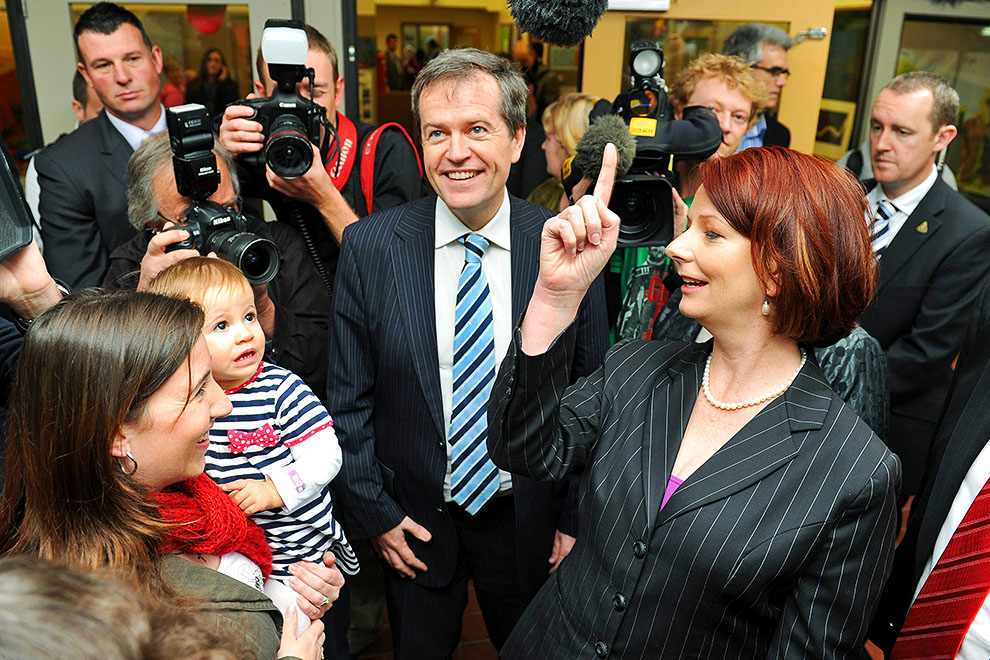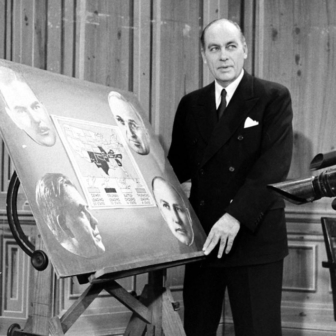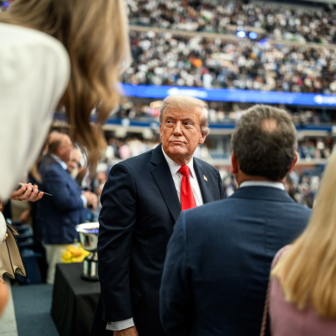One thing all Labor players agree on in ABC TV’s The Killing Season is the sublime nature of the party’s 2007 federal election campaign. Everyone involved, from Kevin Rudd and campaign headquarters down to the drinks carrier, seems to have performed exquisitely. “The best I’ve ever seen,” former treasurer Wayne Swan averred, and he’s seen and run a few of them.
Equally universally accepted is that when Rudd ostentatiously withdrew from the auction for votes ten days before polling day, announcing that “this reckless spending must stop,” he clinched the deal with wavering voters. On screen, it was strategist Bruce Hawker who professed his enthusiasm for that campaign shift.
But the opinion polls tell a different story. Labor entered the campaign with double-digit leads in voting intentions; Newspoll, at the high end, had them on 58 per cent after preferences. By the time of the launch they were on around 55 per cent; on election day the outcome had been whittled down to 52.7 per cent.
So which side ran the magnificent campaign? Whose television advertisements were the more effective? Whose spending promises impressed swinging voters? Impossible to say. It’s fatuous to simply award every campaign to whichever side emerged victorious, but it’s what politics watchers routinely do because there is no other way of measuring them.
A year earlier, when Rudd and Julia Gillard tipped Kim Beazley out of the leadership, Labor was generally ahead in the polls and the trend, until the final weeks of destabilisation, had been upwards. Rudd’s elevation gave Labor a big poll boost, but he brought with him sky-high personal ratings, producing a combination that usually foreshadows a subsiding vote as polling day approaches. Beazley’s personal ratings had been low, which tends to suppress measured voting intentions.
But the 2007 election was always going to be very difficult for the Coalition, whether it was against Rudd or Beazley, and with or without WorkChoices. All else being equal, elections become increasingly challenging for governments the longer they survive.
More generally, some Australian elections are significantly more winnable than others. So much of political success is to do with luck, with being in the right place at the right time. In New South Wales in 2011 and Queensland in 2012, for example, the best Labor campaigns in the world couldn’t have held off monumental landslides.
The grand narrative accounts of John Howard’s 1996 victory against Paul Keating, and the contrast between that and his poor performance as leader during the previous decade, are made up of several elements: a leader who had re-emerged from the wilderness wiser and more collegial; a nation longing for a breather from all that economic reform; the opposition’s small-target strategy (like Rudd’s eleven and a half years later); Keating’s over-fondness for the big picture; Howard’s ability to speak the language of middle Australia.
All of these elements have validity, but most of all, and much more important, 1996 was simply much more winnable for the Coalition than 1987. Labor had been in power for thirteen years and any half-decent Liberal leader (say, Peter Costello, Peter Reith or even Alexander Downer) would have pulled that result off – against any Labor prime minister.
Different personnel would have fuelled a different set of explanations for the Coalition’s win, and a different set of interpretations of what it, and subsequent victories, said about the Australian electorate.
Yet the storytellings emphasise particular individuals and particular events. Like much mythology, this serves a purpose and is generally harmless – unless it is taken seriously. If political strategists actually believed, for example, that Rudd’s pronouncement against “reckless spending” turned the result in 2007, and then tried to replicate it at later elections, it could be a recipe for disaster.
Once in office in 1996, the economic gods smiled on Howard, as they had on Bob Hawke in his first years from 1983. But unlike in the previous decade, growth in the late 1990s and in the noughties kept clipping along year after year, together with historically low inflation, low interest rates and low unemployment. Australia was not alone; governments in other countries reaped similar electoral dividends.
From all these factors, mostly beyond the players’ control, emerge heroes and villains. As is usually the case with first-off-the-rank opposition leaders, Beazley was unlucky. He recorded two respectable losses in 1998 and 2001 at a time when an opposition had no business being competitive. His fiercest internal critic, Mark Latham, was handed the reins for 2004 and clocked in the worst result for an opposition since 1977.
Of course, the strategists and the pollsters gorge on bragging rights, perhaps most of all. For the apparatchik class there is usually just an upside: they receive plaudits for the good times and allow politicians to carry the can for the losses.
Out of the Howard 1996–2007 era emerged the swaggering Crosby–Textor team, which went on to conquer the world (or at least the United Kingdom). One of their neatest tricks was airbrushing out the state and territory losses they were involved in as Coalition advisers during those years. Conservative parties suffered some monumental drubbings in the second tier while Howard was prime minister.
There were always widely accepted reasons, of course. The governing party was brimming with talent, led by a premier/chief minister with magnificent communication skills and an uncanny ability to read the voters; the opposition was a disorganised rabble; and so on. Labor strategists basked in their obvious professionalism and hardened experience ((although oddly these talents didn’t produce the same results in their portions of federal contests).
But the drivers of coast-to-coast Labor largesse were mostly structural and cyclical: the benefits of a roaring national economy combined with the advantages of having the Coalition in office federally. These state hothouses produced pumped-up party operators who, while doubtless smart at internal politics, vastly overestimated their grasp of electoral behaviour. And, just as the cycle clicked a gear, many of them decided to show off their talents in Canberra.
Labor’s 2010 leadership change demonstrated the height of political idiocy in many ways, but two stand out. One was a slavish adherence to – and faith in the “science” of – qualitative and quantitative polling: the belief that people always mean what they say and so the trick to winning elections is asking voters what they want and giving it to them. A subset, as we saw in Episode 2 of The Killing Season, was an evidently exclusive reliance on polling in marginal NSW seats, particularly in outer western Sydney, at the very time voters were preparing to deliver a massive by-election swing against the most toxic government in the country.
Having polled those bits of Sydney, it seems, they extrapolated the numbers to the nation as a whole and pronounced that a landslide was on the way, despite national published polls showing the Rudd government ahead. As one of these machine men solemnly told interviewer Sarah Ferguson, the Penrith state by-election result showed that the federal party was headed for defeat.
The other indicator that neophytes were in control was the fact that no one, it seemed, warned of the incumbency-depleting effect of replacing a prime minister when an election was on the horizon – and compounding the error by bringing the election date forward. It was an elementary mistake, as I pointed out a week before the event.
Now recall the chief organisers of the coup. Ferguson reminded us that they were mostly new to Canberra, but the key fact is that they got there via senior positions at state level. National secretary Karl Bitar and NSW senator Mark Arbib were both former NSW branch secretaries. Victorian factional heavy, senator David Feeney, was director of strategy for Victorian Labor premier Steve Bracks and campaign director for Labor in the 2006 South Australian state election. Bill Shorten was a former Victorian state president of the Labor Party.
All these state-level heavy hitters, and others, had descended on federal politics pumped up by their own campaigning capacities. Hadn’t each of them played a key role for his party in those astonishing election outcomes in his state?
Of course, many ducks lined up to produce the 2010 election cataclysm, including Rudd’s (and his staff’s) well-known rudeness to backbenchers, and the decision-making paralysis in his office (real but no doubt overplayed by coup-plotters).
And it wouldn’t have happened had Liberals not elected Tony Abbott as leader the previous December and campaigned against carbon pricing. Nor if the government hadn’t responded by dumping the carbon pollution reduction scheme in April, a move straight out of the NSW politics manual that drove Rudd’s personal ratings through the floor.
And of course Julia Gillard could simply have said no.
But Labor’s Howard-era successes at state level produced the freak show subsequently seen in Canberra. Some of those individuals have since departed. But some remain. •





